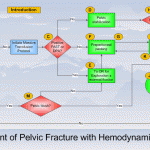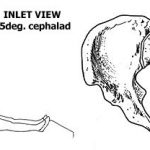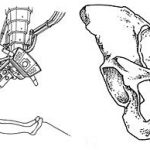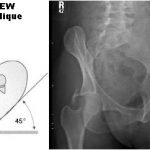The usual thinking is that most unstable trauma patients need a quick trip to the OR to stop the bleeding from something. In the US and Europe, patients with nasty pelvic fractures are no exception, especially those with hemoperitoneum. But many of these patients are bleeding from vessels associated with the pelvic fractures and not so much from associated intra-abdominal injuries. And operative management of pelvic fracture bleeding is far from satisfying, even when using preperitoneal packing.
Well, things are a little different in Japan. In many cases, unstable patients are taken to interventional radiology for angio and possible embolization. Is this prudent, or is it dangerous? A Japanese group decided to critically look at this practice by examining the Japan Trauma Data Bank for answers.
Here are the factoids:
- Patients with pelvic fracture and positive FAST were included, who underwent either laparotomy or angioembolization as their first intervention (n=1153). Those with non-salvageable head injury were excluded, as well as patients who underwent another major procedure first (craniotomy, thoracotomy, ortho procedures, etc.). Only 317 patients remained.
- In-hospital mortality was the primary outcome of interest
- A total of 123 underwent laparotomy first, and 194 went to angio first
- A very small number of patients were hypotensive on arrival (81 laparotomy first, 82 angio first)
- Half of the patients who were hypotensive on arrival went to angio first (!)
- Laparotomy-first patients had a higher crude mortality, but this disappeared when confounders were controlled. This was true in patients who were either normotensive or hypotensive on arrival.
- The authors concluded that the initial intervention should be determined by severity of injury, since in-hospital mortality was no different
Bottom line: Whoa! This is a sweeping statement for a study with so few subjects. Yes, it can be very difficult to determine whether initial bleeding is from the pelvis vs a solid organ or mesenteric injury while in the ED. But it is all too easy to fritter away time (and the patient’s blood/life) in the angiography suite. I recommend trying to stabilize your patient as best you can with fluid and/or blood. If you can maintain a “reasonable” blood pressure, proceed to CT for a quick look at the torso. Then go to the most appropriate location to take care of the problem. And if your patient decompensates in CT or angio, immediately proceed to the operating room!
Related posts:
References:
- Comparison between laparotomy first versus angiographic embolization first in patients with pelvic fracture and hemoperitoneum: a nationwide observational study from the Japan Trauma Data Bank. Scand J Trauma 21:82, 2013.
- Eastern Association for the Surgery of Trauma Practice Management Guidelines for Hemorrhage in Pelvic Fracture-Update and Systematic Review. J Trauma 71:1850-1868, 2011.





